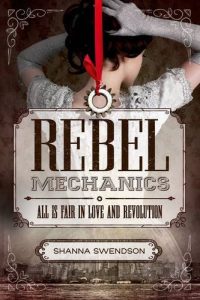movies
Steampunk at the Movies
When I first had the idea for the book that became Rebel Mechanics, I started preparing to write it by reading every steampunk book I could find, just to see what the genre was like and what had been done with it. I determined that there were three primary approaches to a steampunk world.
One was alternate history — it was our world and our Victorian era, but technological development, and sometimes other factors, had gone a different way so that the steampunky elements and retrofuturistic technology existed.
The other was secondary world — it’s a fantasy world (like Narnia, Middle Earth, Westeros, etc.) that looks a bit like our Victorian era, but with stempunky twists.
The third was post-apocalyptic — in the future, society has been destroyed and has rebuilt to approximately a Victorian level of technology/culture, with twists that make it steampunky rather than the way our Victorian era was.
I obviously went with alternate history, but one of the steampunk series I liked the best took the post-apocalyptic approach — the Hungry Cities series by Philip Reeve, starting with the book Mortal Engines.
I was pleased and hopeful when I heard that they were making a movie out of that first book because if it did well, it might open the door to movie interest for the Rebel Mechanics books. Alas, the movie was rather a bomb, in spite of having Peter Jackson (of the Lord of the Rings movies) involved. I didn’t get around to seeing it at the theater, but out of curiosity I checked the DVD out of the library.
And ouch. It’s been about ten years since I read the books, so I don’t remember a lot of plot details, but I’m pretty sure it wasn’t basically Star Wars. Some of the imagery was wonderful, bringing to life this weird world where the cities are mobile, on giant tank-like treads, scouring the earth for resources, and with some of the larger cities preying on smaller, less powerful cities. But so much of it also looked like a cheap Disney Channel production, especially when any characters were talking. And yet it didn’t seem like the movie was aimed at teens because the characters were significantly aged up (they’re 17 in the book, but one of the actors was pushing 30 when it was made, and the characters seemed to be treated like they were 20-something). I felt like the movie skipped on explaining anything that was going on, and like I said, the end sequence was basically the battle against the Death Star from Star Wars (or possibly the similar sequence from The Force Awakens).
The worse thing was, it was rather boring. Midway through the movie, I ended up looking up the entire cast and their histories on IMDB, and then got sidetracked in random web surfing. That’s a bad sign.
I had thought while reading the books that there was no way this would be filmable. It turns out that the stuff I thought would be impossible to film worked out rather well. But somehow they managed to miss the point of the books while writing the script and turned interesting characters into generic tropes. Great visuals can’t compensate for that.
So, if you love steampunk and were looking for a good steampunk movie, this isn’t it, and I’m afraid this movie might have killed steampunk on film, for a while, at least.

